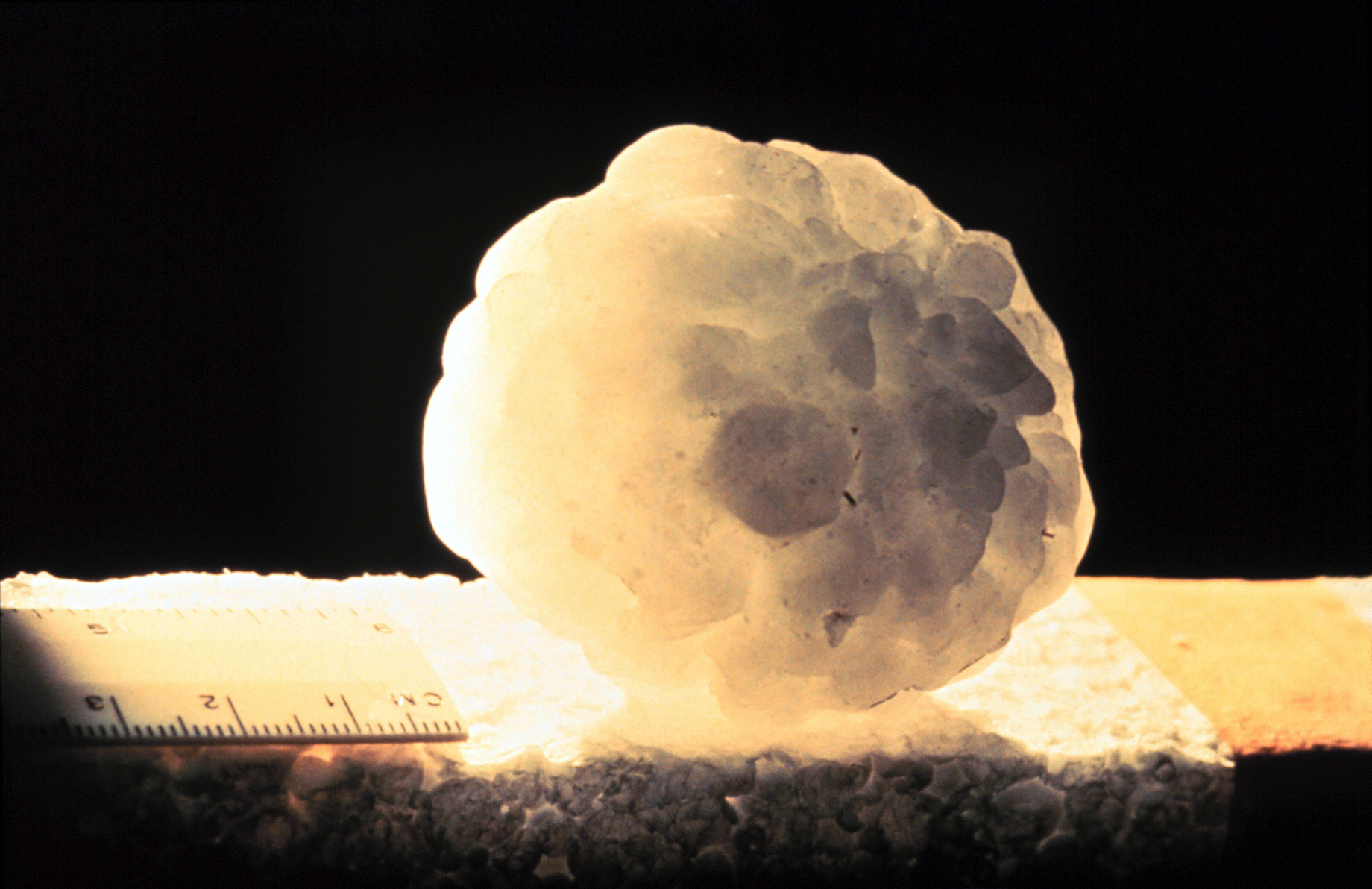
Hail
Hail is a form of solid precipitation.[1] It is distinct from ice pellets (American English "sleet"), though the two are often confused.[2] It consists of balls or irregular lumps of ice, each of which is called a hailstone.[3] Ice pellets generally fall in cold weather, while hail growth is greatly inhibited during low surface temperatures.
"Hailstone" and "Hailstorm" redirect here. For other uses, see Hail (disambiguation), Hailstone (disambiguation), and Hailstorm (disambiguation).
Unlike other forms of water ice precipitation, such as graupel (which is made of rime ice), ice pellets (which are smaller and translucent), and snow (which consists of tiny, delicately crystalline flakes or needles), hailstones usually measure between 5 mm (0.2 in) and 15 cm (6 in) in diameter.[1] The METAR reporting code for hail 5 mm (0.20 in) or greater is GR, while smaller hailstones and graupel are coded GS.
Hail is possible within most thunderstorms (as it is produced by cumulonimbus),[4] as well as within 2 nmi (3.7 km) of the parent storm. Hail formation requires environments of strong, upward motion of air within the parent thunderstorm (similar to tornadoes) and lowered heights of the freezing level. In the mid-latitudes, hail forms near the interiors of continents, while, in the tropics, it tends to be confined to high elevations.
There are methods available to detect hail-producing thunderstorms using weather satellites and weather radar imagery. Hailstones generally fall at higher speeds as they grow in size, though complicating factors such as melting, friction with air, wind, and interaction with rain and other hailstones can slow their descent through Earth's atmosphere. Severe weather warnings are issued for hail when the stones reach a damaging size, as it can cause serious damage to human-made structures, and, most commonly, farmers' crops.
Definition
Any thunderstorm which produces hail that reaches the ground is known as a hailstorm.[5] An ice crystal with a diameter of >5 mm (0.20 in) is considered a hailstone.[4] Hailstones can grow to 15 cm (6 in) and weigh more than 0.5 kg (1.1 lb).[6]
Unlike ice pellets, hailstones are often layered[7] and can be irregular and clumped together. Hail is composed of transparent ice or alternating layers of transparent and translucent ice at least 1 mm (0.039 in) thick, which are deposited upon the hailstone as it travels through the cloud, suspended aloft by air with strong upward motion until its weight overcomes the updraft and falls to the ground. Although the diameter of hail is varied, in the United States, the average observation of damaging hail is between 2.5 cm (0.98 in) and golf-ball-sized 4.4 cm (1.75 in).[8]
Stones larger than 2 cm (0.79 in) are usually considered large enough to cause damage. The Meteorological Service of Canada issues severe thunderstorm warnings when hail that size or above is expected.[9] The US National Weather Service has a 1 in (25 mm) diameter threshold, effective January 2010, an increase over the previous threshold of 0.75 in (1.9 cm) hail.[10] Other countries have different thresholds according to local sensitivity to hail; for instance, grape-growing areas could be adversely impacted by smaller hailstones. Hailstones can be very large or very small, depending on how strong the updraft is: weaker hailstorms produce smaller hailstones than stronger hailstorms (such as supercells), as the more powerful updrafts in a stronger storm can keep larger hailstones aloft.